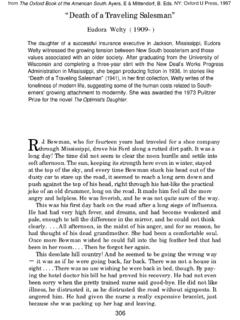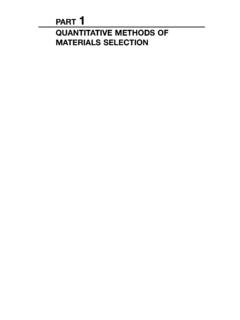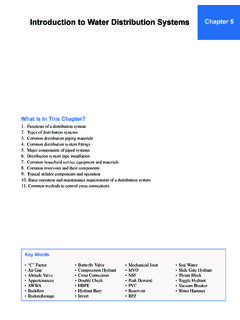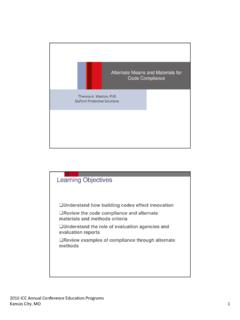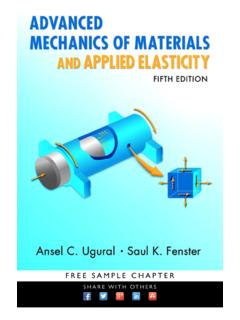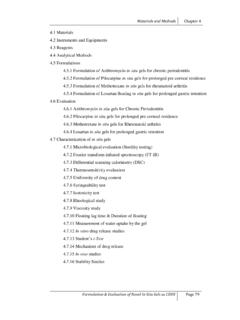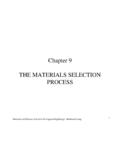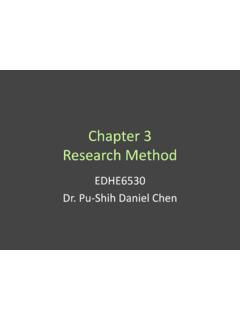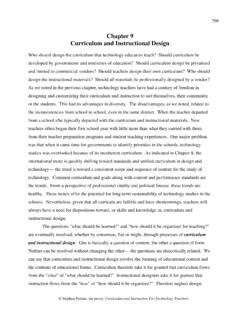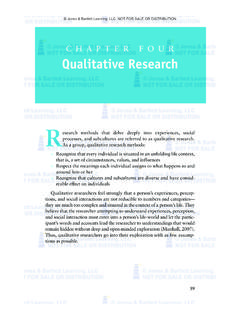Transcription of CHAPTER 15 ACCOUNTING PERIODS AND METHODS SOLUTIONS TO ...
1 CHAPTER 15 ACCOUNTING PERIODS AND METHODS SOLUTIONS TO PROBLEM MATERIALS Status: Q/P Question/ Present in Prior Problem Topic Edition Edition 1 Tax year: natural business year New 2 Tax year: S corporation Unchanged 23 Tax year: personal service corporation Unchanged 34 Restoration under claim of right doctrine Unchanged 45 Cash method Unchanged 56 Accrual basis: who must use Unchanged 67 Cash method: grocery store Unchanged 78 Cash versus accrual method Unchanged 89 Issue ID Unchanged 910 ACCOUNTING method: timing of deduction New 11 Use of reserves Unchanged 1112 Installment method: benefits Unchanged 1213 Installment method: related parties Unchanged 1314 Installment method.
2 Electing out Unchanged 1415 Long-term contracts Unchanged 1516 Long-term contracts: length Unchanged 16* 17 Partnership tax year Unchanged 1718 Fiscal year: personal service corporation Unchanged 18* 19 Change in tax year: short-period tax Unchanged 1920 Cash versus accrual method: tort and breach of contract Unchanged 2021 Cash and accrual basis expenses and income Modified 2122 Accrual method: required use New 23 Accrual basis: all-events test and economic performance test Unchanged 2324 Change in ACCOUNTING method: 481 adjustment New * 25 Installment method: benefits Unchanged 25 15-1 15-2 2004 Comprehensive Volume/ SOLUTIONS Manual Status: Q/P Question/ Present in Prior Problem Topic Edition Edition * 26 Installment method: calculations Unchanged 26* 27 Installment sales.
3 Imputed interest Modified 27* 28 Installment sales between related parties Unchanged 29* 29 Disposition of installment obligations Unchanged 3030 Long-term contracts: completed contract method Modified 3131 Long-term contracts: capitalization versus expense and percentage of completion method Unchanged 3232 Long-term contract METHODS Unchanged 3333 Long-term contract METHODS Unchanged 34* 34 Percentage of completion method: lookback Unchanged 35 *The solution to this problem is available on a transparency master. ACCOUNTING PERIODS and METHODS 15-3 CHECK FIGURES FYE March 31.
4 FYE June 30. $45,000. Deduction limit $120,000. 19. $5,603. Deduction $44,000 under both METHODS . Accrual income $12,000; cash basis income $10,000. Accrual deduction $0 for 2003; cash basis deduction $30,000 for 2003. Accrual and cash basis deduction $47,002. 22. Only c., d., and e. must use accrual method. 23. Total 2003 expense $ million. 24. 481 negative adjustment of $190,000 is required. 25. Option 1 $79,281; option 2 $81,766. Total gain $22,500; contract price $45,000; collections $19,000; recognized gain $14,700. Contract price $47,500; collections $21,500.
5 $172,231. $27,108. 28. $192,000. Gain $45,000. Gain $15,000 from Jan. 1 payment. Gain $30,000. 2003 profit $310,000; 2004 deduction $70,000. $70,000 loss deferral until 2004. Not long-term contract. Not long-term contract. Completed contract. 2003 $200,000; 2004 $300,000. $4,008. 15-4 2004 Comprehensive Volume/ SOLUTIONS Manual DISCUSSION QUESTIONS 1. May 31st would be immediately after the close of the natural business year. The individual income tax returns for the preceding calendar year would be completed, except for those under extensions, and much of the receivables would have been collected.
6 P. 15-5 2. Because the S corporation will have losses for the first two years, it seems likely that the loss for the first tax year ending September 30th will be less than the loss for the first tax year ending on December 31st. By using a fiscal year ending September 30th, the loss that will be reported on the individual shareholder s calendar year return would be less for the short period ending on that date than if the tax year ended December 31st. Also, once the corporation begins to show a profit, the shareholder will be required to make required tax payments if the year ending September 30th is used.
7 Pp. 15-4 and 15-5 3. The ideal tax year would end on January 31, and the salary would be paid each January. Thus, in 2003 the corporation could pay $25,000 salary, which would eliminate the corporation s taxable income. The medical doctor would report salary of $25,000 for 2003. For the fiscal year ending January 31, 2004, the corporation would pay $300,000 salary in January 2004, and that would be the doctor s salary income for the calendar year 2004. If the corporation used the calendar year to report income and paid the salary in December, the doctor would have $300,000 salary income in 2003 and in 2004.
8 Thus, as compared to using a calendar year, the doctor will always have $275,000 of deferred income by using a fiscal year. pp. 15-6 and 15-7 4. At first glance, it appears that Freda is getting a bad result. However, Freda was treated quite well by the system of an annual ACCOUNTING period. Her income for 2003 was overstated because of the overcharge error and this caused her to have less taxable income in 2004 under 1341. In effect, Freda is allowed to take the 2004 deduction at the same tax rate as the income was taxed in 2003 (35%). On the other hand, Freda took a deduction for state income taxes that yielded greater tax benefit (35% rather than 15%) in 2003 than the tax on the recovery in 2004 (15% rather than 35%).
9 P. 15-10 5. The cash method would enable Cardinal to defer income in the first year of operations. The deferral would equal the accounts receivable less the accounts payable at the end of the first year. However, while the deferred amount is included in income for year 2, the year 2 receivables less accounts payable will be deferred until year 3. This process on a one-year deferral will continue until the last year of Cardinal s operations. Thus, for all practical purposes, the first year deferral available with the cash method is permanent assuming the accounts receivable and the accounts payable relationships remain the same.
10 Pp. 15-11 and 15-12 6. The cash basis taxpayer can deduct the premiums in 2003 because the prepayment does not extend beyond the end of the succeeding tax year ( , one year rule for prepaid expenses). p. 15-11 7. Generally, a grocery store must use the accrual method of ACCOUNTING because inventories are an income-producing factor to the business. However, the taxpayer may qualify for the small taxpayer exception and use the cash method. The exception applies to taxpayers with average annual gross receipts (calculated over the most recent 3 years) of not more than $1 million.
